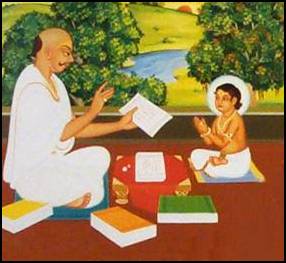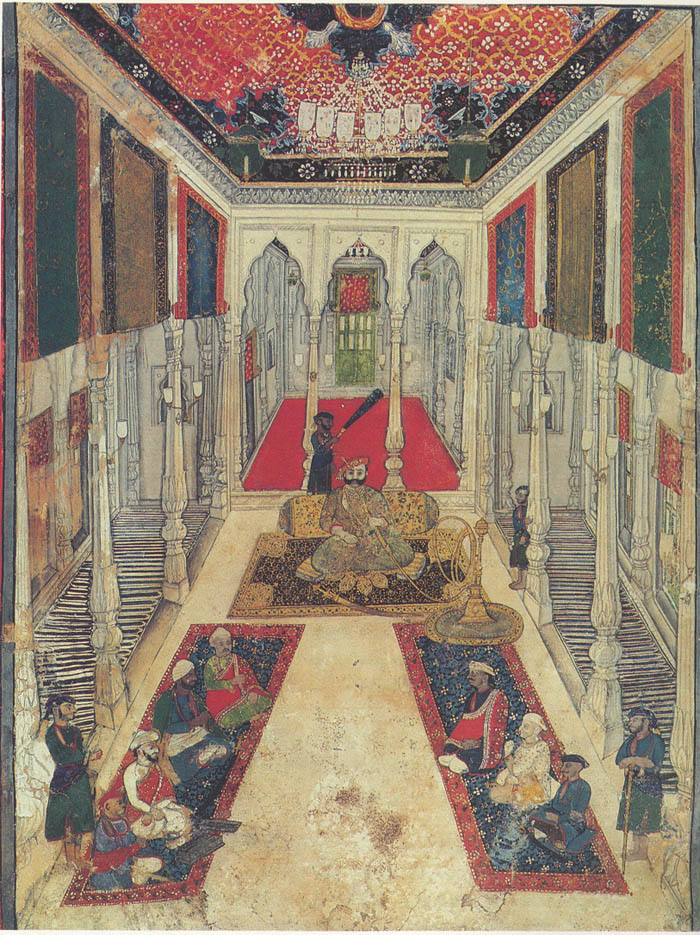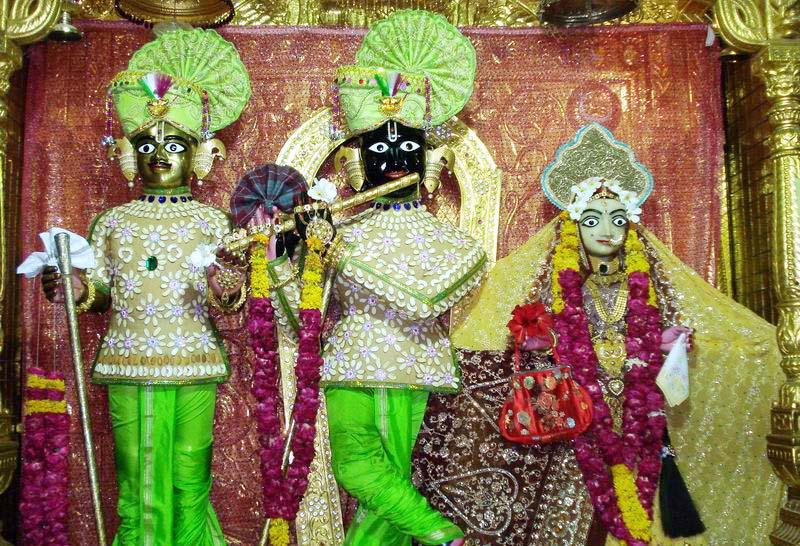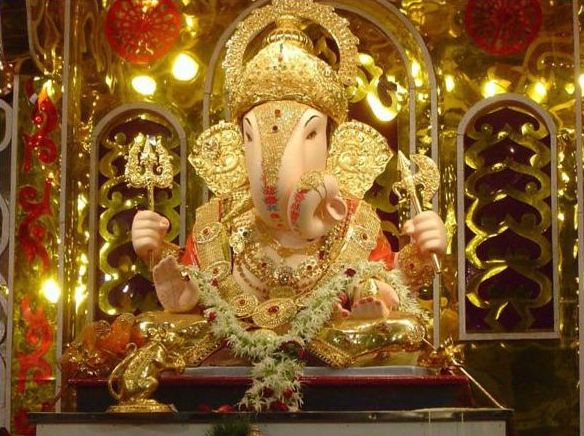|
Dada Khachar
Dada Khachar (1800–1852) was a devotee of Swaminarayan and the ''Darbar Shri'' of Gadhada. His father was Ebhel Khachar and his mother Somadevi. His maiden name was ''Uttamsinh''. He came to be known as Dada Khachar and had four sisters: Jaya (Jivuba), Lalita (Laduba), Panchali, and Nanu. The entire family were followers of Swaminarayan. It was because of the insistence of Dada Khachar and his sisters that Swaminarayan made Dada Khachar's Darbar (court) in Gadhada his home for over 27 years. Dada Khachar and his sisters requested Swaminarayan to build a temple in Gadhada. They offered their own place of residence for this purpose. A massive temple, Shri Swaminarayan Mandir, Gadhada, was constructed in the courtyard of Dada's darbar, and became a place of pilgrimage for followers of Swaminarayan. Swaminarayan himself brought stones on his head from the River Ghela for the foundation of the temple. The idol of Gopinath was installed in the central shrine of the temple. ... [...More Info...] [...Related Items...] OR: [Wikipedia] [Google] [Baidu] |
Swaminarayan
Swaminarayan (IAST: '; 3 April 1781 – 1 June 1830), also known as Sahajanand Swami, was a yogi and Asceticism, ascetic believed by followers to be a manifestation of Krishna or the highest Theophany, manifestation of Purushottama, around whom the Swaminarayan Sampradaya developed. In 1800, he was initiated into the ''Uddhava'' ''sampradaya'' by his guru, Swami Ramanand, and was given the name Sahajanand Swami. Despite opposition, in 1802, Ramanand handed over the leadership of the Uddhava Sampradaya to him before his death. According to the Swaminarayan tradition, Sahajanand Swami became known as Swaminarayan, and the Uddhava Sampradaya became known as the Swaminarayan Sampradaya, after a gathering in which he taught the Swaminarayan Mantra to his followers. He emphasized "moral, personal, and social betterment," and ''ahimsa''. He is also remembered within the sect for undertaking reforms for women and the poor, and performing large-scale non-violent yajna, yajñas (fire s ... [...More Info...] [...Related Items...] OR: [Wikipedia] [Google] [Baidu] |
Gadhada
Gadhada is a town and a municipality in Botad District in the state of Gujarat, India. Gadhada is situated at bank of River Ghela. Swaminarayan lived here for more than 25 years. Geography Gadhada is located at . It has an average elevation of 104 metres (341 feet). Demographics India census, Gadhada had a population of 26,751. Males constitute 52% of the population and females 48%. Gadhada has an average literacy rate of 62%, higher than the national average of 59.5%: male literacy is 70%, and female literacy is 54%. In Gadhada, 16% of the population were under 6 years of age. Transport Gadhada is well connected by roads to the cities of Gujarat. Regular bus service and private vehicles are available from Ahmedabad and other big cities of Gujarat. There's no rail track passing through the town. To reach Gadhada by train, you may get down at Botad or Ningala in Ahmedabad - Bhavnagar track. Connecting bus service to Gadhada is available from both these statio ... [...More Info...] [...Related Items...] OR: [Wikipedia] [Google] [Baidu] |
Durbar (court)
Durbar is a Persian-derived term (from ) referring to the noble court of a king or ruler or a formal meeting where the king held all discussions regarding the state. It was used in South Asia for a ruler's court or feudal levy. A durbar may be either a feudal state council for administering the affairs of a princely state, or a purely ceremonial gathering, as was increasingly the case during British rule in India. The most famous durbars belonged to powerful emperors and kings. In the north of India, cities like Baroda, Gwalior, Udaipur, Jaipur, Jodhpur, Jaisalmer, Agra, and the city of Lahore in Pakistan have palaces and forts that adorn such halls. The Mughal emperor Akbar had two halls—one for his ministers, and the other for the general public. Usually, durbar halls are lavishly decorated with the best possible materials available at the time. In the south of India, the Mysore Palace had a number of such halls, especially the Peacock Hall, having colour tinted glasses i ... [...More Info...] [...Related Items...] OR: [Wikipedia] [Google] [Baidu] |
Shri Swaminarayan Mandir, Gadhada
Swaminarayan Mandir, Gadhada (Devnagari: श्री स्वामिनारायण मन्दिर, गढडा), also known as Gopinathji Dev mandir, is a Hindu temple in Gadhada, Gujarat, India. This Swaminarayan Sampradaya temple is one of the six temples built by the sect's founder Swaminarayan. The temple is dedicated to Radha Krishna. About Gopinathji Mandir This temple is one of six temples which was made under the supervision of Swaminarayan, the founder of Swaminarayan Sampradaya. The land for constructing this temple in Gadhada, was donated by the court of Dada Khachar in Gadhada. Dada Khachar and his family were devotees of Swaminarayan. The temple was made in the courtyard of his own residence. The temple work was planned and executed directly under the consultation and guidance of Swaminarayan. Swaminarayan supervised the construction and also helped with the manual service in the construction of the temple, by lifting stones and mortar. This shrine h ... [...More Info...] [...Related Items...] OR: [Wikipedia] [Google] [Baidu] |
River Ghela
The River Ghela is a river that runs through the town of Gadhada in the Indian state of Gujarat. The Ghela river originates from the Jasdan hills, near Fulzar village in the Jasdan district and flows into the Arabian sea. Its length is 118 km and its catchment area is 622 km2. The Ghelo Somnath Dam and the Ghelo Itaria Dam are situated on this river having 60 km2 and 104 km2 catchment area respectively. This river was heavily visited by Swaminarayan and is considered to be one of the holiest rivers by the Swaminarayan Sampradya. The Swaminarayan Gopinathdev Mandir and the BAPS Swaminarayan Mandir are both located near this river. See also * Shri Swaminarayan Mandir, Gadhada Swaminarayan Mandir, Gadhada (Devnagari: श्री स्वामिनारायण मन्दिर, गढडा), also known as Gopinathji Dev mandir, is a Hindu temple in Gadhada, Gujarat, India. This Swaminarayan Sampradaya temple ... References Riversflowing through ... [...More Info...] [...Related Items...] OR: [Wikipedia] [Google] [Baidu] |
Cult Image
In the practice of religion, a cult image is a Cultural artifact, human-made object that is venerated or worshipped for the deity, Spirit (supernatural entity), spirit or Daimon, daemon that it embodies or represents. In several traditions, including the ancient religions of Ancient Egypt, Egypt, Ancient Greece, Greece and Rome, and Hinduism, cult images in a temple may undergo a daily routine of being washed, dressed, and having food left for them. Processions outside the temple on special feast days are often a feature. Religious images cover a wider range of all types of images made with a religious purpose, subject, or connection. In many contexts "cult image" specifically means the most important image in a temple, kept in an inner space, as opposed to what may be many other images decorating the temple. The term idol is an image or representation of a god used as an object of worship, while idolatry is the worship of an "idol" as though it were God. Ancient Near East and E ... [...More Info...] [...Related Items...] OR: [Wikipedia] [Google] [Baidu] |
Gopinath (god)
Gopinath () or Gopinatha is a form of the Hindu god Krishna. It is also one of the primary names of Krishna, meaning, "the lord of the cowherdesses". Gopinath is associated with the gopis (milkmaids) of the Braj (Vraja) region. The gopis are regarded to symbolise selfless devotion (bhakti) to the deity, flocking around him in love and worship. The relationship between the gopis and Krishna is described in texts such as the Harivamsa, Bhagavata Purana, and the Gita Govinda. Meanings The name Gopinath is a Sanskrit compound. Generally, Gopinath is understood to be a ''tatpuruṣa'' compound meaning "Lord (or protector) of the ''gopīs''." A Gaudiya interpretation of the name is that Gopinath is a ''bahuvrīhi'' compound meaning "Krishna whose masters are the ''gopīs''." Temples In many Krishna temples, Krishna is worshipped as Gopinath. Historic temples of Gopinath includes: * Sri Sri Radha Gopinath Temple, Jaipur * Sri Sri Radha Gopinath Temple, Vrindavan * Gopinath Dev ... [...More Info...] [...Related Items...] OR: [Wikipedia] [Google] [Baidu] |
Gopalanand Swami
Gopalanand Swami (1781–1852) was a paramhansa of the Swaminarayan Sampradaya who was ordained by Swaminarayan. He worked and guided many followers to spread the Swaminarayan Sampradaya. The Swaminarayan Sampradaya believes that Gopalanand Swami is regarded as one of the yogis who attained the positions of Ashthangyog or the 8 fold paths in the field of sacred yog. It is also believed that Gopalanand Swami was appointed as the head of both Vadtal and Amdavaad Desh. Biography Born as ''Khushal Bhatt'', he was born in the Arvalli District's, Torda Village of Idar, Sabarkantha, Gujarat. His father was an audichiya brahmin, Motiram Bhatt and his mother was Jiveeba Bhatt. Gopalanand Swami pursued deep study and showed great interest of grammar, Indian philosophy of Nyaya and Vedanta. Gopalanand Swami was a scholar, with knowledge in Vyakaran (grammar), Nyaya, Mimasa, astrology. He was married to Adityabai and had two children Harisankar and Anupamba though he felt no attach ... [...More Info...] [...Related Items...] OR: [Wikipedia] [Google] [Baidu] |



